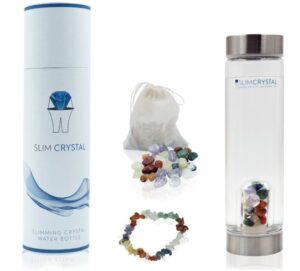In today’s fast-paced world, plastic water bottles have become a convenient and ubiquitous choice for staying hydrated on the go. However, recent concerns about the potential health risks associated with certain plastics have raised questions about the safety of these containers.
Studies have shown that some plastic water bottles may leak harmful chemicals into the water we consume, posing a threat to our well-being. So, how can you determine if your plastic water bottle is potentially releasing toxic substances?
The answer lies in understanding and checking for specific labels that indicate the bottle’s safety standards. In this article, we will explore the importance of these labels and provide you with the knowledge you need to make informed choices about the water bottles you use.
When it comes to purchasing bottled water, it’s crucial to be mindful of potential health risks. By simply checking the bottom of the bottle, consumers can take a proactive step in protecting their well-being.
To begin, it’s important to familiarize yourself with the different letters that may appear on plastic water bottle labels. Letters such as HDP, HDPE, PP, and a few others signify that the bottle will not release any harmful substances into the water.
Conversely, other letters represent specific chemicals found in the water you are consuming. Let’s explore some of the most common labels and their implications:
PET or PETE Plastic
These letters indicate single-use bottles, which can potentially release heavy metals and chemicals that disrupt hormonal balance. PET is commonly found in water and soda bottles, as well as certain packaging. Repeated use of PET bottles increases the risk of leaching and bacterial growth, as they are challenging to decontaminate.
HDP or HDPE Plastic
Bottles labeled with these letters are considered safer options as they release minimal chemicals. Experts recommend choosing HDPE bottles when purchasing bottled water, as they are likely the healthiest choice available. HDPE plastic is commonly used for milk jugs, oil bottles, toys, and some plastic bags. It is also highly recyclable.
PVC or 3V
This label indicates the presence of PVC, a soft and flexible plastic that releases two toxic chemicals affecting hormonal balance. PVC is used in food wrapping, cooking oil bottles, teething rings, children’s toys, and blister packaging for various consumer products.
LDPE
While LDPE plastic is not suitable for bottle production, it is commonly used for plastic bags. Fortunately, LDPE does not release any chemicals into the water. This type of plastic is found in shrink wraps, dry cleaner garment bags, squeezable bottles, and bread packaging.
PP Plastic
PP stands for polypropylene, a white or semi-transparent plastic often used for syrup and yogurt cups. It is tough, lightweight, and has excellent heat-resistance properties. PP serves as a barrier against moisture, grease, and chemicals. Additionally, it is used for disposable diapers, plastic bottle tops, margarine and yogurt containers, potato chip bags, straws, packing tape, and rope.
PS Plastic
PS refers to polystyrene, an inexpensive and lightweight plastic that releases some carcinogenic substances. It is commonly used for coffee cups, fast food casings, disposable styrofoam drinking cups, take-out food containers, and foam packaging.
PC or Non-Labeled Plastic
This category is the most concerning when it comes to food production. PC or non-labeled plastics often release BPA (Bisphenol A) chemicals, known as endocrine disruptors. It is frequently used in the production of sports water bottles and food containers. Due to potential chemical leaching, it’s important to exercise caution with these containers.
Check Out This Beautifully Made Glass Reusable Water Bottle To Hold All Of Your Cold Beverages

By carefully examining the bottom of the bottle and deciphering the labels, you can make informed choices about the water bottles you purchase. Your health and well-being are paramount, so always prioritize the safety of the plastics you come into contact with.
In conclusion, when it comes to choosing plastic water bottles, being aware of the potential risks and taking proactive measures is essential for safeguarding your health. By checking for specific labels on the bottom of the bottle, you can gain valuable insights into the safety of the plastic and its potential to release toxic chemicals.
Choose Bottles Labeled With HDP, HDPE, And PP To Reduce The Risk Of Harmful Chemical Leaching Into Your Beverages
Remember,
- Labels such as PET or PETE indicate single-use bottles that may release heavy metals and disrupt hormonal balance.
- Labels like PVC or 3V signify the potential release of toxic chemicals.
- LDPE bottles are safe for plastic bags but not suitable for bottle production.
- PP bottles are considered a healthier choice.
- PS bottles may release some carcinogenic substances.
- Non-labeled PC plastics should be used with caution due to the potential release of BPA chemicals.
By making informed choices and selecting bottles with safer labels, you can minimize the potential health risks associated with plastic water bottles. Prioritizing your well-being and staying vigilant about the materials you come into contact with are key steps toward a healthier lifestyle.
Check Out This Beautifully Made Glass Reusable Water Bottle To Hold All Of Your Cold Beverages
So, remember to always check for these labels and make conscious decisions when purchasing plastic water bottles. Your health matters, and by being aware and informed, you can make choices that align with your well-being and contribute to a safer environment for yourself and future generations.





